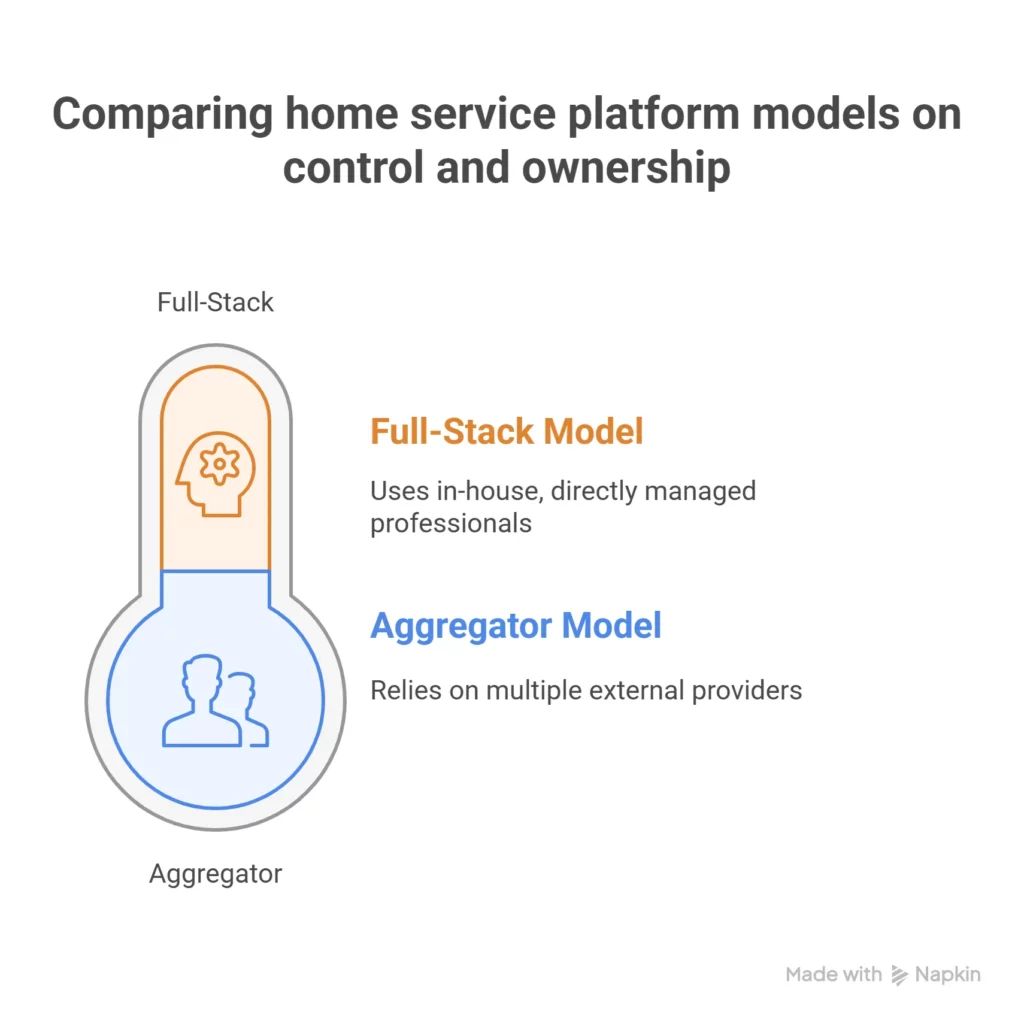Have you ever scrambled to find a plumber on a rainy Sunday or desperately searched for a salon-at-home option before a last-minute date night? You’re not alone. The demand for on-demand home services has exploded — because let’s face it, nobody wants to wait for hours or call five different people to get a leaking tap fixed. We live in a convenience economy, and home service apps are stealing the spotlight.
From working moms to busy bachelors and even digitally savvy seniors, everyone craves reliable help — be it for house cleaning, beauty services, or appliance repairs. That’s why platforms like UrbanClap (now Urban Company), Handy, and Housejoy are thriving. Entrepreneurs are waking up to this golden opportunity. And if you’ve got an idea for a home services platform, now’s the time to ride the wave.
In this blog, we’ll break down the why, how, and what next of starting your own home services marketplace — with real-world examples and actionable tips. Oh, and if you’re looking to get that app built? Miracuves is already ahead of the curve. Let’s dive in.
What Is a Home Services Marketplace Platform?
A home services marketplace platform is a digital space (usually an app and website) where users can connect with service professionals for everyday needs — think electricians, plumbers, cleaners, beauticians, and even yoga instructors. It’s like Uber, but for fixing your house or upgrading your look.
These platforms typically work in two models:
- Aggregator Model: The app lists multiple service providers, and customers choose based on ratings, pricing, and availability.
- Full-Stack Model: The platform hires and manages professionals directly, ensuring quality control.

Read more : – What is UrbanClap App and How Does It Work?
Why This Market Is Booming
- $1 Trillion+ industry globally in the informal sector (Statista)
- Rising urban population, shrinking patience levels
- Increased trust in digital transactions post-COVID
- Social media influence and FOMO on cleaner, sleeker homes
Essential Features Your Platform Must Have
For Users (Customers)
- Smart booking & time slot selection
- Verified service providers
- Real-time tracking
- Ratings & reviews
- Secure payments
For Service Professionals
- Profile management
- Booking calendar
- Earnings dashboard
- Route optimization
For Admins
- CMS dashboard
- Real-time analytics
- Dispute resolution tools
- Dynamic pricing engine
Read more :- What is OfferUp App and How Does It Work?
Competitor Snapshots: What They’re Doing Right
UrbanClap (Urban Company) – India
Offers beauty, repair, and wellness services with full-time professionals. Known for strong brand trust and trained staff.
Handy – USA
Focuses on cleaning and handyman services. Standout feature: 60-second booking interface.
Housejoy – India
Integrates construction and renovation services, a niche angle not all platforms cover.
TaskRabbit – Global
Owned by IKEA, connects freelancers to tasks like moving, furniture assembly, etc.
Helpr – Canada
Strong B2B play: Offers white-labeled services for landlords and property managers.
Read more :- What is Rappi App and How Does It Work?
Step-by-Step Guide to Launching Your Platform
Step 1: Identify Your Niche
Don’t try to do everything from day one. Start small — focus on one high-demand category like house cleaning or salon services.
Step 2: Conduct Local Market Research
Understand customer pain points, service gaps, pricing expectations, and supply-side availability.
Step 3: Define Your Monetization Strategy
- Commission per booking
- Subscription for providers
- Featured listings
- Surge pricing (for urgent services)
Step 4: Build the MVP (Minimum Viable Product)
Avoid over-engineering. Launch a clean, usable app that includes core booking and payment features.
Step 5: Recruit Service Providers
Run local campaigns, partner with training institutes, or incentivize early sign-ups with bonus leads.
Step 6: Launch & Market Like a Pro
Go hyperlocal with influencer tie-ups, flyers in residential complexes, WhatsApp groups, and Google Ads.
Real-Life Monetization Examples
- Urban Company: Commission + subscription for professionals + in-app upselling (e.g., facial add-ons)
- Handy: Takes up to 20% commission per booking, with optional provider plans
- TaskRabbit: Charges service fees from both parties
Tech Stack & Scalability Tips
- Frontend: React Native or Flutter for cross-platform speed
- Backend: Node.js + Firebase for real-time updates
- Payments: Stripe, Razorpay, PayPal (localized)
- Maps & Location: Google Maps API, Mapbox
Read more: What is Thumbtack App and How Does It Work?
Conclusion
Home service platforms are more than apps — they’re digital lifelines. As our lives get busier, this industry will only grow bigger and smarter. Whether you’re a solo founder or a full-stack startup team, the market is wide open for disruption.
At Miracuves, we help innovators launch high-performance app clones that are fast, scalable, and monetization-ready. Ready to turn your idea into reality? Let’s build together.
FAQs
Q1. What are the most popular home service categories?
Cleaning, beauty, appliance repair, plumbing, electrical, pest control, and wellness services top the charts.
Q2. Do I need to onboard licensed professionals?
Yes — especially for services like plumbing, electrical work, and appliance repair. It builds trust and ensures safety.
Q3. How much does it cost to build a home services app?
You can build a home services app with Miracuves for $2K to $5K using a ready-made clone solution, delivered within 3–6 days including full setup and deployment.
Q4. Should I build from scratch or use a clone solution?
Clone solutions like Miracuves’ UrbanClap Clone help you launch faster and reduce risk. You can always customize later.
Q5. Can I run this business part-time?
Initially, yes. But as demand grows, you’ll need to dedicate more time or hire a team for operations and support.
Q6. How do I attract and retain service providers?
Offer transparent payouts, bonus incentives, in-app training, and consistent job flow to keep your providers happy.
Related articles:








